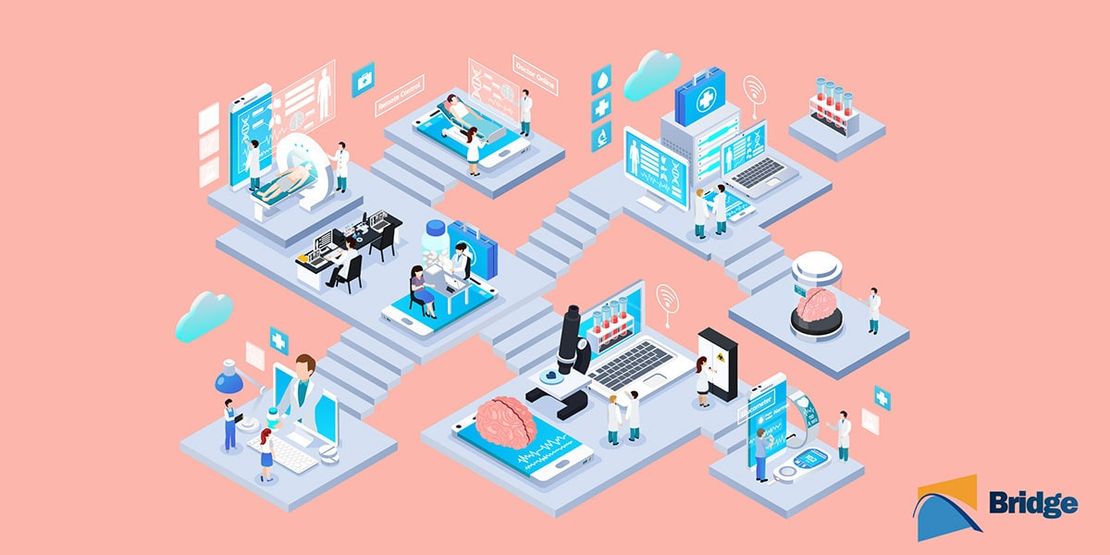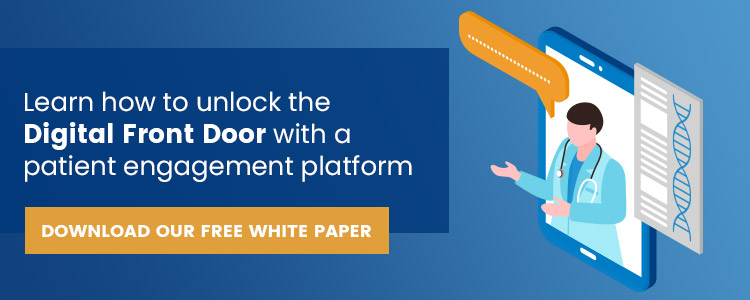How a MACRA/MIPS Patient Portal Can Aid in Attestation
- Blake Rodocker
- August 14, 2017

Updated on May 26, 2021.
What is MACRA/MIPS?
MACRA (Medicare Access and CHIP Reauthorization Act), pays healthcare providers that care for Medicare beneficiaries a variable amount based on the quality of the care they provide.
Merit-Based Incentive Payments System (MIPS) is a payment track created under MACRA. It aims to link payments to the quality of care provided, improve care processes and health outcomes, increase the use of healthcare information, and reduce the cost of care.
What are the four categories that make up MIPS?
MIPS is made up of four performance categories. It represents several previously existing Medicare reporting programs, renovated and rolled into one.
https://qpp-cm-prod-content.s3.amazonaws.com
- Quality 40% – Assesses the quality of care delivered based on measures of performance. Report data for a 12 month performance period.
- Cost 20% – Assesses the cost of the care provided based on Medicare claims. Cost measures are also used to gauge patient care’s total cost during the year or hospital stay. Report data for a 12 month performance period.
- Improvement Activities 15% – Assesses participation in clinical activities that support the improvement and patient engagement, care coordination and patient safety. Report data for a 90 day performance period.
- Promoting Interoperability 25% – Focuses on the electronic exchange of health information using Certified EHR Technology (CEHRT) to improve patient’s access to their health information and exchange of information. Report data for a 90 day performance period.
Over the next few years, each MIPS performance category’s weight will change in the calculation of the MIPS composite score – as described in the image below.
In 2022, the Centers for Medicare and Medicaid Services (CMS) aims to implement MIPS Value Pathways (MVPs)[¹], a new MIPS participation framework. MVPs aim to move away from siloed reporting of measures and activities towards a focused set of measures and activities that are more meaningful to a clinician’s scope of practice and are meaningful to patient care. CMS is working with stakeholders to create an MVP reporting criteria for the year 2022.
MIPS Value Pathways Framework:
https://qpp.cms.gov/mips/mips-value-pathways
How does a patient portal impact MACRA/MIPS attestation?
In order to efficiently capture and share patient data, healthcare providers need an Electronic Health Record (EHR) that stores data in a structured format. Structured data allows healthcare providers to retrieve easily and transfer patient information and use the EHR in ways that can aid patient care.
CMS and the Office of the National Coordinator for Health Information Technology (ONC) have established standards and other criteria for structured data that EHRs must meet in order to qualify for use in promoting interoperability programs.
To avoid a downward payment adjustment, healthcare providers must use a 2015 Edition of CEHRT, such as Bridge. CEHRT gives healthcare organizations assurance that an EHR system or module offers the necessary technological capability, functionality, and security to help them meet the MACRA/MIPS criteria. Certification also helps healthcare providers and patients be confident that the electronic health IT products and systems they use are secure, maintain data confidentiality, and work with other systems to share information.
A patient engagement solution can help healthcare providers attest for the “Providing Patients Electronic Access to Their Health Information” measure which is worth 1-40 points, within the “Promoting Interoperability” performance category, which makes up 25% of the MIPS final score. Bridge is a 2015 certified patient portal; therefore, healthcare organizations can use Bridge to promote interoperability for MIPS. With Bridge’s use, patients are provided timely access to view, download, and transmit their health information.
Benefits of 2015 Edition CEHRT:
- Improves interoperability by adopting new and updated vocabulary and content standards for the structured capture and exchange of health information, including a Common Clinical Data Set (CCDS) composed primarily of data expressed using adopted standards; and rigorously tested and identified content exchange standard (Consolidated Clinical Document Architecture (C-CDA)). Standards-based electronic exchange supports patient care by ensuring that healthcare data is consistently available to the right person, at the right place, and at the right time.
- Includes “application access” certification criteria that require health IT solutions to demonstrate it can provide application access to the CCDS via an Application Programming Interface (API).
- It supports patient electronic access to health information through new functionalities and a range of potential technologies, including APIs. These technologies allow patients greater flexibility and choice in accessing and sharing their health information.
- Includes a revised View, Download, and Transmit criterion that continues to support patient access to their health information. This includes the email transmission of health information to any third party the patient chooses, provided the patient is properly advised of the risks of doing so, and it is sent through a second encrypted method of transmission.
Bridge is certified on 16 different EHR criteria, representing a significant range of functionality for an EHR-independent 3rd party patient portal solution. Bridge meets the following 2015 Edition ONC Health IT Certification Criteria:
- Meets 170.315 (d)(1): Authentication, Access Control, Authorization
- Meets 170.315 (d)(2): Auditable Events and Tamper-Resistance
- Meets 170.315 (d)(3): Audit Report(s)
- Meets 170.315 (d)(5): Automatic Access Time-out
- Meets 170.315 (d)(6): Emergency Access
- Meets 170.315 (d)(7): End-User Device Encryption
- Meets 170.315 (d)(9): Trusted Connection
- Meets 170.315 (e)(1): View, Download, and Transmit to 3rd Party
- Meets 170.315 (e)(2): Secure Messaging
- Meets 170.315 (g)(1): Automated Numerator Recording
- Meets 170.315 (g)(4): Quality Management System
- Meets 170.315 (g)(5): Accessibility-Centered Design
- Meets 170.315 (g)(6): Consolidated CDA Creation
- Meets 170.315 (g)(7): Application Access – Patient Selection
- Meets 170.315 (g)(8): Application Access – Data Category Request
- Meets 170.315 (g)(9): Application Access – All Data Request
Bridge v2.0 has been certified by SLI, an Office of the National Coordinator-Authorized Certification Body (ONC-ACB) in accordance with the certification criteria adopted by the Secretary of Health and Human Services (HHS). The portal helps increase patient engagement while helping provider groups meet requirements for MACRA/MIPS.
How does a MACRA patient portal impact Cures Act compliance?
The 21st Century Cures Act promotes electronic health information access and clarifies that patients should not be required to pay for this access. The MACRA patient portal has the ability to format data to a specific standard (HL7®, FHIR®, and The United States Core Data for Interoperability (USCDI)) acceptable to the patient to facilitate interoperable EHR exchange.
A MACRA patient portal can facilitate compliance in a few ways, namely:
- Protecting patient data by encrypting authentication credentials and implementing multi-factor authentication.
- Providing patients with a means of accessing information regarding care costs and outcomes ensuring cost transparency through a patient bill pay portal.
- Providing patients access to their healthcare information within their medical records, including clinical notes, test results, and medications.
To find out how to become Cures Act compliant, read the following article:
Conclusion
As the healthcare industry trends toward value-based care, healthcare organizations should utilize digital tools that improve the quality of care provided to patients. Practice or hospital leaders can use various patient engagement solutions such as MIPS patient portals to foster simplified and patient-centered care. Healthcare authorities such as the ONC reward practitioners that prioritize patient experience to deliver the highest quality of care, and a MACRA patient portal can assist with just that.
Please find our resource for more information regarding patient portals, MACRA, MIPS, and Meaningful Use.
- qpp.cms.gov. (n.d.). MIPS Value Pathways – QPP. [online] qpp.cms.gov. Available at: https://qpp.cms.gov/mips/mips-value-pathways




